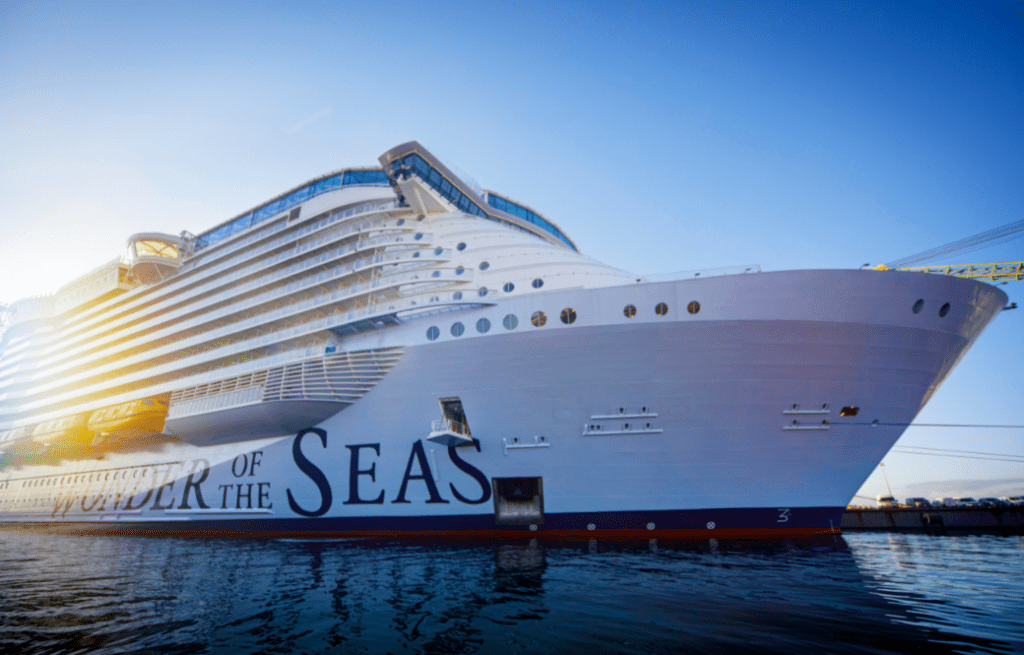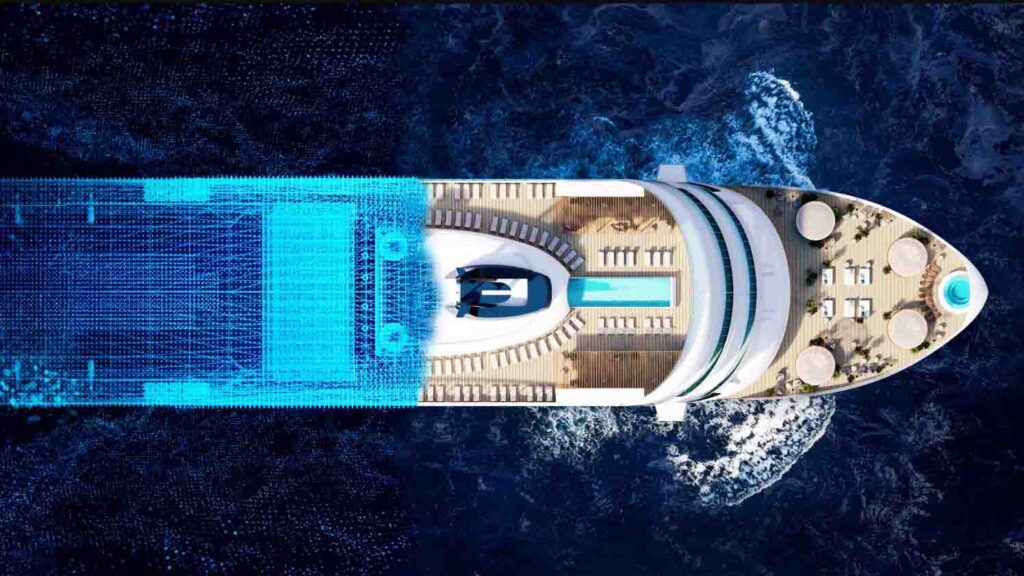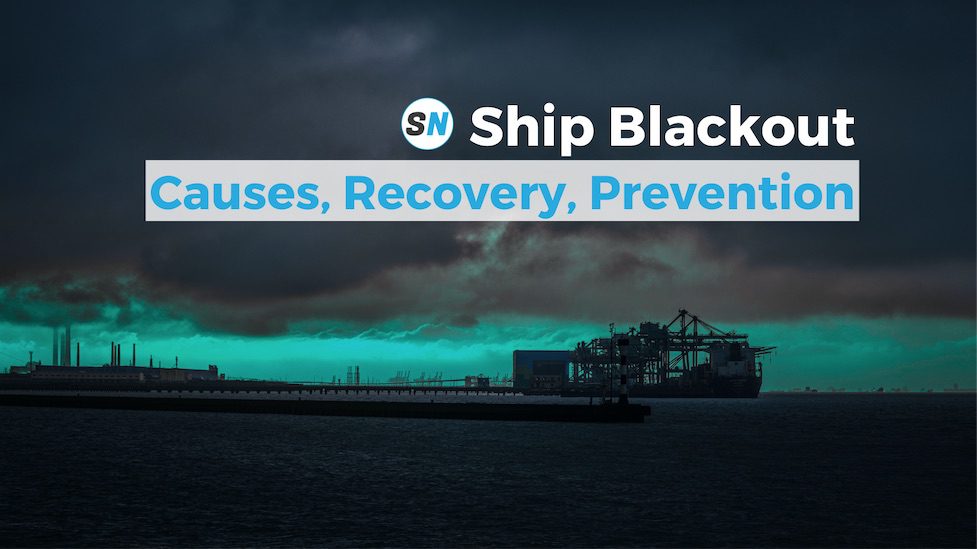28 November 2024
How cruise ships evolved in the past century?

Cruise ships are a great innovation in sea-going vehicles which have vastly evolved in the past century.
As the cruise market continues to heat up, so does the competition. More companies are competing for more seasoned customers and attempting to entice a younger crowd to cruising.
Table of Contents
Titanic vs New Cruise Era
At the time of its launch in 1912, the Titanic was the largest ship afloat and the very picture of elegance. It was a full 882 feet long, 92 feet wide at its thickest point, and 104 feet from the top of the bridge to the keel. The British ocean liner was so large that it included a gymnasium, swimming pool, over 370 first-class cabins, and multiple restaurants that the passengers could enjoy.
Yet, despite all of these impressive measurements, the titanic seems like a dwarf besides most modern cruise ships.
The Wonder of the Seas, Royal Caribbean’s premier cruise liner, and the largest cruise ship ever constructed is actually a full five times the size of the Titanic. She is 1,188 feet long and 210 feet wide. Where the Titanic weighed around 46,000 tons the Wonder of the Seas weighed 236,857. Most impressive of all however is the cruise liner’s startling capacity which stands at 7,000 passengers and 2,300 crew members. When fully loaded the titanic only boasted space for 2,453 passengers and 885 crew at best.

World’s largest Cruise ship – Delivered
Royal Caribbean International has taken delivery of Wonder of the Seas, the world’s largest cruise ship ever made.
Ship Nerd
The Wonder of the Seas design incarnates a floating city. Inside and out passengers will find 20 restaurants and 19 bars and lounges. Guests can enjoy a whole host of activities such as zip-lining, rock climbing, surfing, laser tag, and mini-golf. The ship has a huge ten-story slide, a full-size carousel, and an outdoor movie screen. One thing both cruise ships and ocean liners have in common is a massive range.
Indeed the titanic was crossing the Atlantic Ocean when she struck an iceberg off Newfoundland. However, many modern cruise ships can recreate the transatlantic journey with almost identical travel times.
Propulsion
Another significant change from the titanic’s era is the type of fuel, used to operate the vessels. For instance, the titanic ran on coal, consuming about 825 tons per day. Most modern cruise ships run on diesel engines and typically consume up to 250 tons every 24 hours, or around 80,000 gallons. However, the fuel tanks on the ships can hold 4 million gallons of fuel or more. Therefore, they can travel for up to 50 days without having to enter the port. When they need to replenish their range, cruise ships will typically dock with the refueling barge. Hence, it will connect a series of hoses to pump fuel into the cruise ship’s tank.
The Wonder of the Seas is powered by six marine-diesel sets, each composed of three 16-cylinder Wärtsilä 16V46D common rail engines and three 12-cylinder Wärtsilä 12V46D engines. For propulsion, the vessel uses three 20,000 kilowatts ABB azipod diesel-electric thrusters mounted under the stern. The ship also incorporates four bow thrusters, each with 7,500 horsepower.

Construction & Launch
The construction process of a modern cruise ship is one of the most impressive feats of engineering in the world. It involves powerful cranes at specially equipped shipyards like Chantiers de l’Atlantique in western France. The construction can take years and consists of modular steel sections, lifted and welded into place piece by piece. Each floor is fabricated upside down and welded on the below section from bottom to top. This takes place in a dry dock which can be flooded and drained as needed to test the ship’s capabilities. When construction is complete the dock will be flooded one last time so that the ship can be officially launched.
The process of launching a cruise liner is one of the most impressive events one can witness. After being towed out of the dry dock by one or more tugboats, the ship is slowly maneuvered out to sea. Due to the sheer size of the vessel, this procedure usually includes guiding the cruise liner down small canals and waterways through bridges and around shallow sections. Depending on the shipyard, it can take multiple days to reach the sea.
Safety
Once out in the sea, help may be thousands of miles away should the ship runs into trouble. For that reason, modern cruise ships boast a variety of impressive safety features including thousands of smoke detectors and fire extinguishers as well as five separate fire fighting teams. Lastly, all cruise ships will perform multiple drills to make sure both crew and passengers are up to snuff on the rescue and abandon ship procedures.
Perhaps the most important development in ship safety is the invention of the free-fall lifeboat. They are typically positioned parallel to the cruise ship’s hole where they can be loaded and slowly lowered into the water in mere minutes. In other cases, they will point out towards the sea and be launched into the water bow first. Either way, the boats carry full equipment to take evacuating passengers and crew members to safety in the rare event that something goes wrong.
Ports
Interestingly enough, it’s not just the ships that have seen major technological improvements since the Titanic’s days. The ports are modernizing at a rapid rate as well. The most significant example of this is port electrification. This means issuing fuel-powered equipment in exchange for those powered by cleaner greener energy. This is not only going to reduce pollution in the port area but significantly reduced the carbon emissions of the entire shipping industry.
In the near future ports also hope to provide a service known as shoreside power this would allow ships to turn off their engines, plug into an electrical grid, and power themselves while at birth.
This would help reduce emissions from large vessels like crews and cargo ships which would otherwise need to burn traditional fuel to keep the boat powered in port. It’s a small step but it’s one that dockside fishing companies and property owners are sure to appreciate.

New Shore Power Technology for Cruises by Zinus
Zinus has secured a contract from Norwegian firm Havnekraft to develop and supply a new, flexible shore power technology for cruise ships.
Ship Nerd
Summary
New-era cruise ships are much larger than Titanic in every dimension. Cruise ship design and technology have come a very long way over the past century, with ships like Wonder of the Seas featuring far more facilities and activities for guests to enjoy. While the cost of building the largest cruise ships has increased, the relative ticket prices have come down. So, as well as being safer than ever before, modern cruise ships also offer much more value for money than those of the past.
See Also
YSA Design is using Revit data-based tools and 3D BIM software to improve cruise ship design. Hence, introducing greater accountability on surface materials selection, guest flows, and energy use.

Cruise ship design with greater accountability and efficiency
YSA Design is using Revit data-based tools and 3D BIM software to improve cruise ship design for greater accountability and efficiency.


